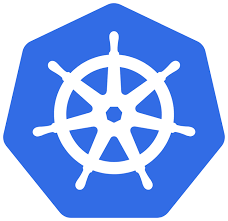Set up Cloudflare Kubernetes Load Balancer to boost app performance. Our Kubernetes team is always here to help you.
Mastering Cloudflare Kubernetes Load Balancer
 If you’re managing applications on Kubernetes and need a reliable way to distribute traffic globally, Cloudflare Kubernetes Load Balancer is the solution you’ve been looking for. Designed to integrate seamlessly with Kubernetes, it offers global load balancing, intelligent traffic routing, and built-in DDoS protection, all while leveraging Cloudflare’s powerful edge network.
If you’re managing applications on Kubernetes and need a reliable way to distribute traffic globally, Cloudflare Kubernetes Load Balancer is the solution you’ve been looking for. Designed to integrate seamlessly with Kubernetes, it offers global load balancing, intelligent traffic routing, and built-in DDoS protection, all while leveraging Cloudflare’s powerful edge network.
Here’s everything you need to know about setting up and configuring Cloudflare Kubernetes Load Balancer, no fluff, just actionable steps.
An Overview
Why Use Cloudflare for Kubernetes Load Balancing?
Cloudflare’s global network of data centers gives your Kubernetes-hosted apps a serious performance boost. By using this, traffic is efficiently routed across your services, reducing latency, improving uptime, and ensuring end-users connect to the best available endpoint.
Key Features
- Kubernetes Integration: Built to work natively with Kubernetes clusters for seamless scaling and orchestration.
- Global Load Balancing: Distributes traffic worldwide using Cloudflare’s edge locations.
- Traffic Routing: Offers intelligent routing policies to optimize traffic flow.
- Health Checks: Automatically routes traffic away from failing pods or services.
- Flexible Algorithms: Supports round-robin, least connections, IP hash, and more.
- Geographic Load Balancing: Serves content from the data center nearest to the user.
- SSL/TLS Termination: Offloads SSL at the edge to reduce pod overhead.
- DDoS Protection: Shield your apps from large-scale attacks.
- Analytics & Logs: Get real-time insight into traffic behavior.
How to Set Up Cloudflare Kubernetes Load Balancer
Follow these steps to get your Cloudflare Kubernetes Load Balancer running:
- Create a Cloudflare Account
Sign up at Cloudflare if you haven’t already. This is essential to access their load balancing services. - Set up a Kubernetes Cluster
Use a managed service like Amazon EKS, Google GKE, Azure AKS, or set up your own on-prem cluster. - Install the Cloudflare Load Balancer for Kubernetes
Deploy the Cloudflare resources to your Kubernetes cluster. This usually includes specific configuration files, services, and pods needed to connect with Cloudflare’s network. - Integrate Your Kubernetes Services
Modify your services and pods so they can be recognized and managed by the load balancer. This may involve labeling them appropriately. - Define Load Balancer Policies
Decide how Cloudflare should route traffic. You can create custom rules based on load, location, or service availability. - Set Up Health Checks
Configure periodic health checks to ensure only healthy services receive traffic. This ensures high availability and better performance. - Configure Load Balancer Algorithms
Choose how the traffic should be distributed, round-robin, least connections, or IP hash, to suit your workload type. - Implement Geographic Load Balancing
Route users to the nearest Cloudflare edge for the fastest response times and best user experience. - Configure SSL/TLS Termination
Offload SSL encryption at Cloudflare’s edge to reduce pod workload and improve speed.
[If needed, Our team is available 24/7 for additional assistance.]
Conclusion
The Cloudflare Kubernetes Load Balancer is ideal for teams that prioritize performance, scalability, and security. It combines Kubernetes’ powerful orchestration with Cloudflare’s extensive global infrastructure, a solid choice for production environments.







0 Comments